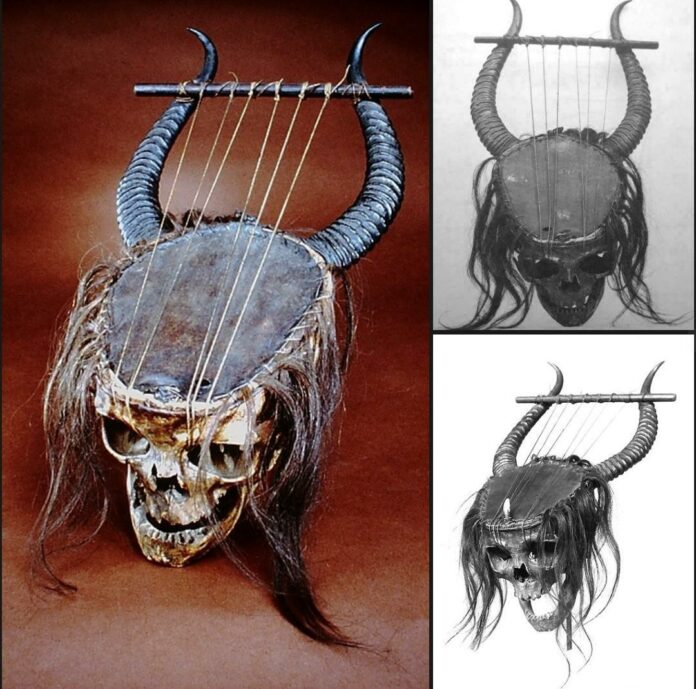A Macabre Musical Marvel
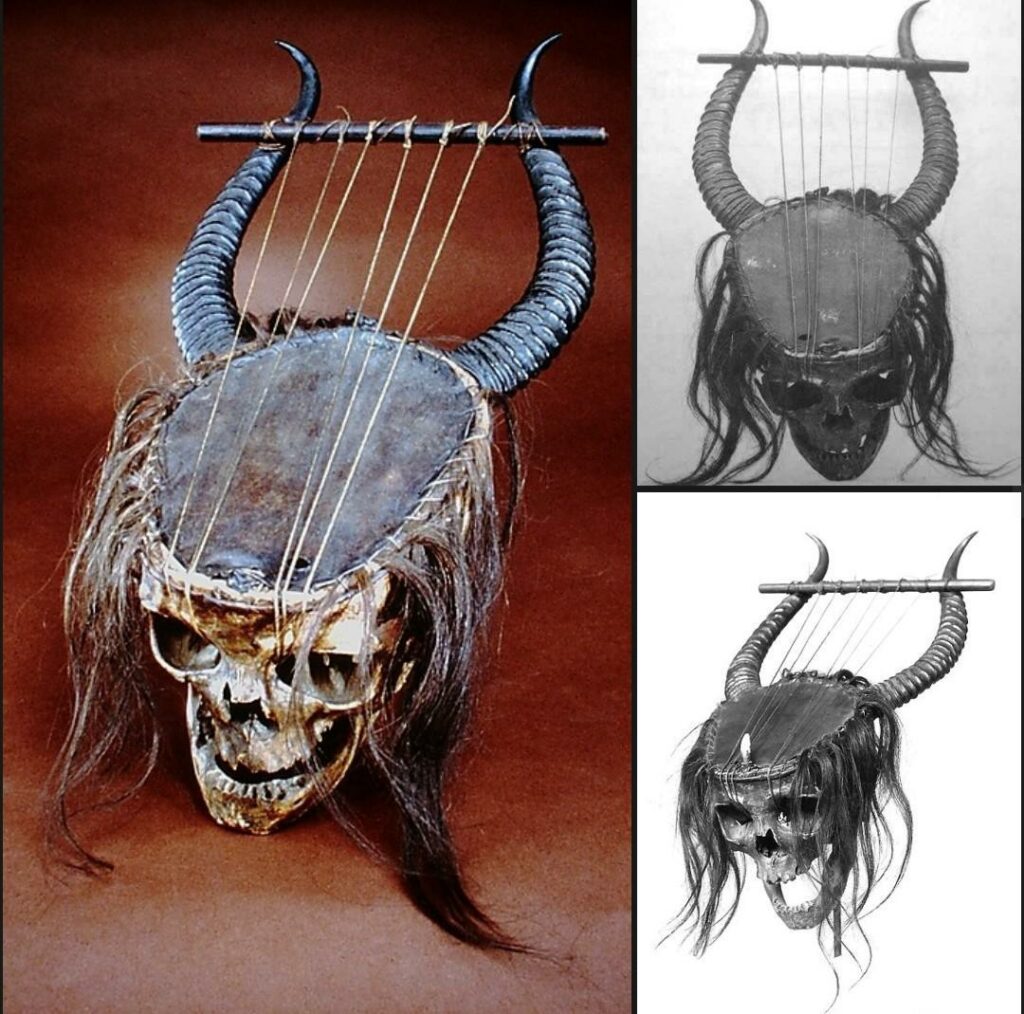
In the 19th century, a unique and intriguing artifact emerged from Central Africa – a lyre crafted from a human skull and antelope horns. This remarkable instrument, now housed in The Metropolitan Museum of Art’s collection, is a testament to the intersection of art, music, and cultural exchange.
An Unusual Composition
Crafted from the Extraordinary
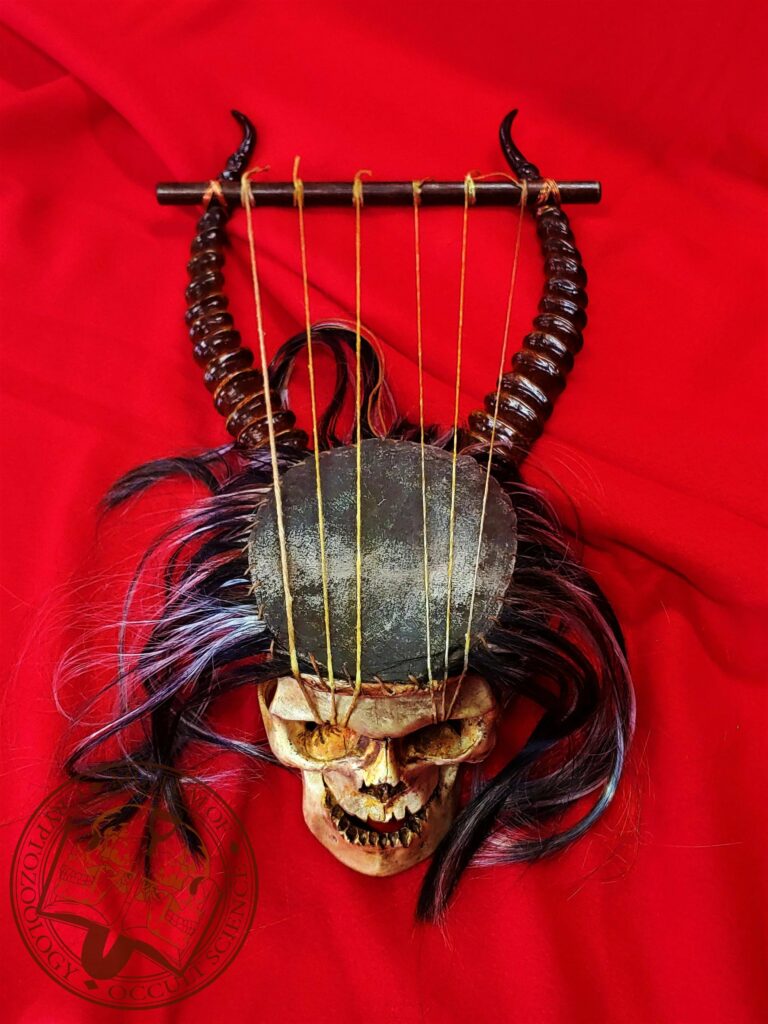
The 36.5 cm long, 14 cm wide, and 13 cm deep lyre is a masterpiece of unconventional materials:
- Human Skull: Forming the main body of the instrument.
- Antelope Horns: Utilized as structural and decorative elements.
- Wood: Likely used for the framework and additional support.
- Skin, Gut, and Hair: Employed for the strings and other functional components.
A Journey Through Time and Cultures
Mistaken Origins and Reattribution
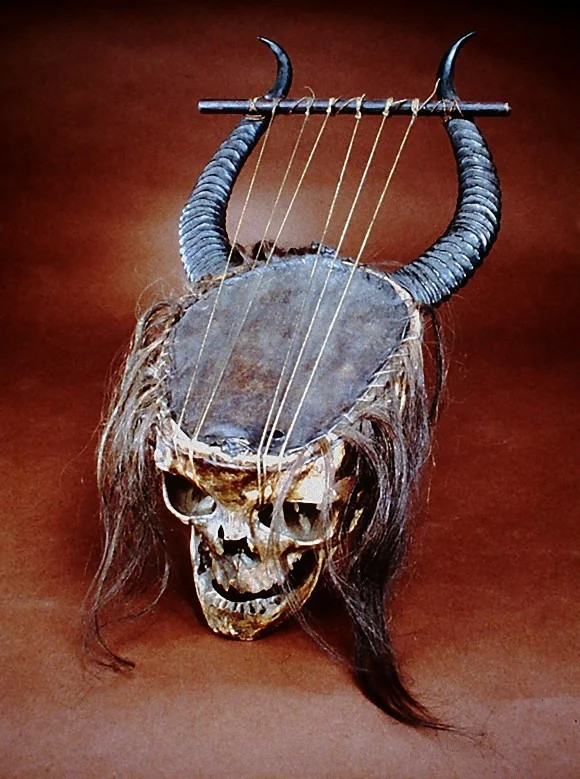
Originally acquired in the late 19th century, the lyre was mistakenly believed to be from South America. By 1906, however, it was accurately identified as originating from Central Africa. This macabre instrument was likely crafted by a local artisan responding to the European fascination with ethnographic curiosities, a popular trend of the era.
Symbolic Meaning or Trade Curiosity?
While there is no known Central African tradition that employs instruments made from human remains, some theorize it might have possessed symbolic or secret ritual significance. However, it is more likely that this lyre was a clever novelty designed for trade rather than for traditional use.
A Broader Context
Comparative Examples
The use of human and animal remains in musical instruments has historical precedents in other cultures:
- Tibetan Damaru and Rkangling: Used in meditation and rituals focusing on the impermanence of life.
- Ashanti Royal Drums: Historically decorated with the skulls of slain warriors.
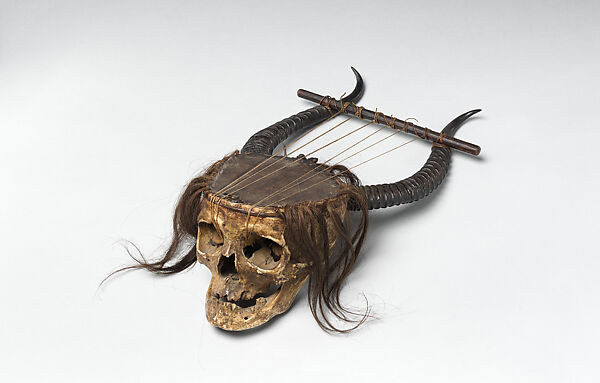
The Central African lyre crafted from a human skull and antelope horns is a captivating artifact that showcases the fusion of cultural practices and the production of trade goods in the 19th century. Although it lacks a direct traditional lineage, it stands as a distinctive piece of musical and cultural history, enchanting audiences with its macabre beauty and fascinating origins.
